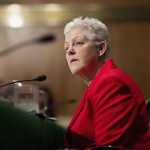What’s Behind the EPA’s Approval of Texas’ New Clean Air Plan
It’s no secret that Texas and the EPA don’t get along.
Just a day after state regulators spent hours in Washington blasting the Environmental Protection Agency (EPA), the EPA today announced plans to approve changes to Texas’s Clean Air Plan that the agency has been insisting on for more than two years.
The new permitting program for Texas is called Plant-Wide Applicability Limits (PALS), modeled after an existing federal program. (So you could say that after today, the TCEQ and EPA are real PALS.)
There’s quite a bit of background here, but in short, you can count this round as a win for the EPA.
In a release, the EPA says that changes to the state’s permitting program for “major air pollution sources” submitted by the Texas Commission on Environmental Quality (TCEQ) “meet federal clean air goals by establishing state rules for existing major facilities that are consistent with federal permitting requirements.”
For some time, Texas has used a Flexible Permitting Program that gives site-wide permits for emissions instead of more specific monitoring. “The TCEQ flexible permit originally just kind of put a bubble over the whole facility,” says Larry Soward, a former commissioner at the TCEQ. “If you stay with these limits for the entire facility, then you’re compliant.”
The EPA put the TCEQ on notice two years ago that that program wasn’t good enough and didn’t comply with the Clean Air Act. “So what’s happened here is that the TCEQ has said, okay we’ll adopt what’s already in federal regulation,” Soward says. “The TCEQ finally has done what the EPA told them to do two years ago. At least on this issue.”
So what are the changes exactly?
Under the PALS program, emissions monitoring is done on specific units at each site under an overall emissions cap, as opposed to a blanket site-wide cap with no specific unit monitoring as before. “Even though they create some flexibility for those units, they don’t allow you to cover an entire site with pollution limits,” Soward says. The EPA also says the new program requires continuous monitoring.
“After all this hoopla started two years ago,” says Soward, “what basically happened is, all the big industry folks in the state said ‘Look, we’ve got to get this fixed. We can’t have uncertainty about whether our permits are federally approved or not.'”
So the facilities themselves started ‘de-flexing’ their permits in order to get them in line with federal regulations. “The last time I checked, every single facility in Texas that was under a flexible permit — around 150 of them — had de-flexed to permits that the EPA could approve, despite what the TCEQ was saying,” Soward says.
Once the changes are published in the Federal Register, the EPA will take public comment for thirty days.
UPDATE:
The Associated Press talked to Carl Edlund, director of the Air, Waste, and Toxic Division in Region 6 of the EPA, which covers Texas. Here’s how he breaks down the new program:
“The proposed program would require industries to separately monitor emissions from different units, while operating under a general cap or umbrella, Edlund said. This means, for example, that if one pollutant is higher than permissible and another is lower but combined, they’re below the pollution “umbrella,’’ the plant would still be able to legally operate.
The TCEQ had challenged in court the EPA’s decision to overturn the state’s so-called “flexible’’ permit program, which also allowed plants to operate under an emissions “umbrella’’ but did not separately detail pollution from different sources. It remains unclear whether Texas will drop that lawsuit.”


